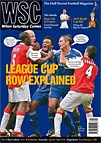 As well as being involved in violence, Italian fan groups have been about flags, flares and noise. Pete Green looks at attempts to improve the atmosphere at UK grounds by importing the best of ultra culture
As well as being involved in violence, Italian fan groups have been about flags, flares and noise. Pete Green looks at attempts to improve the atmosphere at UK grounds by importing the best of ultra culture
“It’s not about copying the nutters in Italy,” insisted one supporter as a Leicester message board recently heated up over the formation of a local ultras group. Those involved may be quick to dissociate themselves from the nastier extremes of their counterparts on the European mainland, but with Italian authority figures calling for a more English approach to crowd control after the recent death of police officer Filippo Raciti at the Catania v Palermo derby, it is difficult to miss the irony of UK fans seeking to co-opt a notorious aspect of Italian football culture.